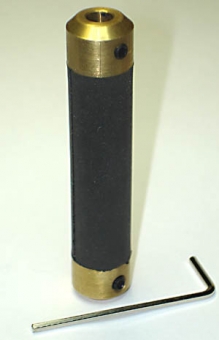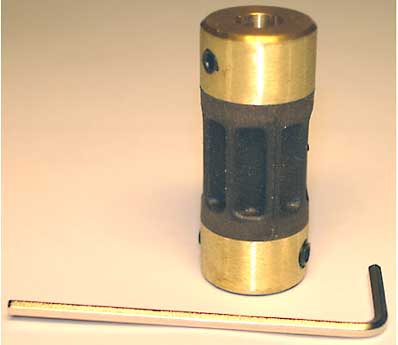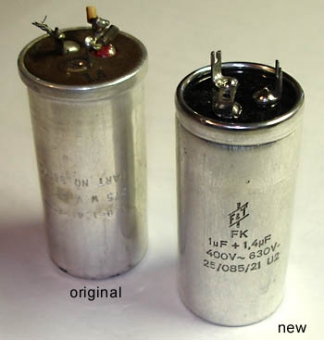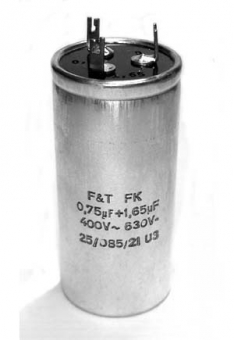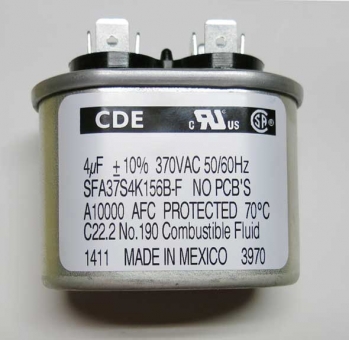|
FAQ Seeburg Musikboxen im Archiv von Jukebox-World |
|
|
Seeburg: Wahl- und Abspielprobleme |
Copyright |
| Seeburg AY selektiert nicht | Seeburg AY doesn't select | |
|
Ich habe meine AY
Komponenten
überholt und bin nun schon beim Zusammenbau. Leider selektiert die
Musikbox
nicht. Das Steuerteil und die Tastatur sind in Ordnung.
|
I have overhauled my AY
components and am now assembling them. Unfortunately, the jukebox does
not select. The control unit and the keyboard are fine.
|
|
|
|
||
| Seeburg AY stellt alle Wahlen mit der Endziffer "1" nicht zurück | Seeburg AY doesn't return selections with last digit "1" | |
|
Eine Seeburg AY selektiert korrekt und
spielt alle Wahlen ab. Alle Singles werden richtig ins Magazin
zurückgestellt - bis auf die mit der Endziffer "1" (A1 bis V1). Auf das
Drücken der Löschtaste reagiert der Mechanismus nicht.
Antwort: |
A Seeburg AY selects correctly and plays all selections. All records are correctly returned to the magazine - except for those with the final digit "1" (A1 to V1). The mechanism does not react when the reject button is pressed. Answer: |
|
|
|
||
|
Funktion
der
Motorkupplung im Seeburg Laufwerk Alle 45 U/Min Modelle inkl. M100A |
Function of the motor coupler in Seeburg
mechanism - All 45 rpm models incl. M100A |
|
|
|
||
| Nach getätigter Wahl läuft der Schlitten nicht an - 45 rpm Modelle | After selection the carriage doesn't start - 45 rpm models | |
Folgendes funktioniert:
Problem: der Schlitten läuft nicht automatisch nach erfolgter Wahl an. Mögliche Ursachen:
|
The following works:
Trouble: The carriage does not start after successful selection. Possible faults:
|
|
|
|
||
| Laufwerk läuft nicht an | Carriage doesn't start | |
|
Die LPC1 stand 15 Jahre im Keller. Damals gab es wohl schon mal einen Reparatur-Versuch. In der Musikbox lag ein Zettel "Keine Plattenwahl, Magnet klemmt im Speicher Zahnrad". Nach dem Reinigen vieler Kontakte, läuft der Motor wieder. Das Problem:
Antwort: Siehe auch
Motorkupplung: Funktion - alle 45 RPM-Modelle; auch Seeburg A |
The LPC stood in the basement for 15 years. It seems a repair was tried already back then. Inside the jukebox a note was found "So selection, magnet jams in gear wheel memory". After cleaning many contatcs the motor starts again. The trouble:
Anwser: See also
Motor clutch: Function - all 45 RPM
models; also Seeburg M100A |
|
|
|
||
|
Nach getätigter Wahl läuft der Schlitten
nicht an Modelle LPC-Serie |
After selection the carriage does not start Models of LPC series |
|
Folgendes funktioniert:
Problem: Jedoch läuft der Schlitten nicht automatisch nach erfolgter Wahl an, es bewegt sich nichts. Sollten sämtliche Transistoren bei diesem Modell getauscht werden? Wenn ja, welche? Mögliche Ursachen:
Die MOTOR ON - Lampe zeigt an, daß die Play Control Unit aktiviert wurde (durch die Wahl) und der Laufwerksmotor eigentlich laufen müßte. Wenn er trotzdem nicht läuft, kann das verschiedene Ursachen haben:
Man sollte messen, ob die Betriebsspannung (117 V AC) am Laufwerk
ankommt. Die Spannung müßte an den Kontakten des Reversing Relay zu
messen sein. Das Reversing Relay hat zwei Umschalter. Dort kommen zwei
Leitungen aus dem Schleppkabel herauf, drei Leitungen gehen zum Motor
und eine zum Kondensator. An den beiden Leitungen aus dem Schleppkabel
müßten die 117 Volt vorhanden sein, oder etwa 100 Volt, falls das
Laufwerk im Play - Modus ist und eine Platte mit großem Mittelloch (oder
keine Platte) aufgelegt ist. Die Spannung muß auch an den abgehenden
Leitungen, entsprechend der Schalterstellung, zu messen sein. Wenn der
Motor nicht warm wird, fehlt vermutlich die Betriebsspannung. Irgend etwas könnte den Motor blockieren. Du kannst versuchen, die Motorwelle (bzw. das Kupplungsstück oberhalb des Motors) mit der Hand zu drehen. Das müßte relativ leicht möglich sein und das große Zahnrad muß sich langsam drehen. Wenn das Laufwerk im Scan - Modus ist, bewegt sich auch das Laufwerk, abhängig von der Drehrichtung, nach links oder rechts. Der Motor braucht zum Betrieb einen Kondensator, der vor dem Motor im Laufwerk montiert ist. Wenn er defekt ist, kann der Motor nicht laufen, aber er wird nach einigen Minuten deutlich warm. Der Kondensator enthält zwei Teile. Im Play-Modus braucht der Motor wenig Kraft und daher ist nur ein Teil des Kondensators in Betrieb. Im Scan-Modus und Transfer-Modus wird mehr Kraft benötigt und daher ist der zweite Teil des Kondensators dazugeschaltet. Dies geschieht durch einen Kontakt auf dem großen Kontaktsatz links neben dem Kondensator. Wenn der Kontakt verschmutzt ist und keine Verbindung herstellt, kann es sein, daß der Motor nicht anläuft. Das passiert auch, wenn der Kondensator defekt ist.
Der Motor kann defekt sein. Der Motor ist eigentlich ein 2 Phasen
Kraftstrommotor. Er braucht zum Betrieb den Kondensator (nicht nur zum
Anlauf), der mittels Phasenverschiebung die zweite Phase erzeugt. Der
Motor hat zwei Wicklungen. Eine ist direkt über den Kondensator an die
Netzspannung (115V) angeschlossen. Die zweite Wicklung wird durch die
zwei Umschaltkontakte umgepolt, um die Drehrichtung zu ändern. Die Drehrichtung muß umzuschalten sein. Im Scan - Modus ist dafür der Reversing Switch zuständig. Das ist der Kontaktsatz mit dem Paddel, das den Schalter umschaltet, wenn das Laufwerk an den Endanschlag fährt. Es kommt vor, daß die Kontakte verschmutzt oder verschmort sind und keine Verbindung herstellen, obwohl sich die Kontaktblätter berühren. Die Modelle der LPC-Reihe haben eine Besonderheit. Sie können beide Seite einer Platte unmittelbar nacheinander abspielen. Dafür muß, je nach dem, ob die A- oder B-Seite gespielt werden soll, die Drehrichtung des Motors unabhängig von der Stellung des Reversing Switch umschalten können. Dafür gibt es das Reversing Relay, das vorne am Laufwerk montiert ist. Es wird mechanisch verriegelt, sobald das Laufwerk in den Transfer-Modus geht. Für die Kontakte darauf gilt das gleiche wie für den Reversing Switch.
Die LPC (und eine Reihe anderer Modelle) haben eine weitere
Besonderheit. Sie können Schallplatten mit 33 1/3 UpM und 45 UpM
abspielen. Dazu ist es nötig, die Drehzahl des Motors umschalten zu
können. Die Drehzahl ist direkt abhängig von der Frequenz der
Betriebsspannung. Für Platten mit 33 1/3 Upm und im Scan- und Transfer -
Modus läuft der Motor mit der 50 Hz - Netzfrequenz. Für das Abspielen
von 45 UpM - Singles wird eine Betriebsspannung mit etwa 67,5 Hz
erzeugt. Dafür gibt es die Auto Speed Unit (45TASU1). Wenn diese defekt
ist, funktioniert alles, auch das Abspielen von Platten mit kleinem
Mittelloch (33 1/3 UpM). Sobald jedoch eine Platte mit großem Mittelloch
aufgelegt wird, bleibt der Motor stehen. Natürlich gibt es noch weitere Fehlermöglichkeiten, wie Kontaktfehler in Steckverbindungen, abgerissene oder gebrochene Kabel und Ähnliches. Aber das kommt selten vor. Transistoren wirst Du nur im Verstärker und in der ASU finden. Das Tormat Control Center (TCC) arbeitet mit Röhren. Es ergibt keinen Sinn, etwas auf Verdacht (oder weil man es irgendwo gelesen hat) auszutauschen. Wenn die Fachkenntnisse nicht für eine ordnungsgemäße Fehlersuche ausreichen, ist es besser, das defekte Teil (z. B. Verstärker, ASU, TCC) durch einen Fachmann reparieren zu lassen. |
The following works:
Problem: However, the carriage does not start automatically after the selection is made, nothing moves. Should all transistors in this model be replaced? If so, which ones? Possible faults:
The MOTOR-ON lamp indicates that the Play Control Unit has been activated (with the selection) and the carriage motor should actually be running. If it is still not running, there may be various reasons for this: You should measure whether
the operating voltage (117 V AC) arrives at the carriage. The
voltage should be measured at the contacts of the reversing relay.
The reversing relay has two changeover switches. Two lines come up
from the trailing cable, three lines go to the motor and one to the
capacitor. The 117 volts should be present on the two lines from the
trailing cable, or about 100 volts if the carriage is in play mode
and a record with a large center hole (or no record) is attached.
The voltage must also be measured on the outgoing cables according
to the switch position. If the motor does not warm up, the operating
voltage is probably missing. Something could be blocking
the motor. You can try turning the motor shaft (or the coupling
piece above the motor) by hand. This should be relatively easy and
the large gear wheel should turn slowly. If the carriage is in scan
mode, the carriage will also move to the left or right, depending on
the direction of rotation. The motor requires a
capacitor for operation, which is mounted in front of the motor in
the carriage. If it is defective, the motor cannot run, but it will
warm up considerably after a few minutes. The capacitor contains two
sections. In play mode, the motor requires little power and
therefore only one section of the capacitor is in operation. In scan
mode and transfer mode, more power is required and therefore the
second section of the capacitor is switched on. This is done by a
contact on the large contact set to the left of the capacitor. If
the contact is dirty and does not make a connection, the motor may
not start. This also happens if the capacitor is defective. The motor may be defective.
The motor is actually a 2-phase power motor. It needs the capacitor
for operation (not only for starting), which generates the second
phase by means of phase shifting. The motor has two windings. One is
connected directly to the mains voltage (115V) via the capacitor.
The polarity of the second winding is reversed by the two changeover
contacts in order to change the direction of rotation. It must be possible to switch the direction of rotation. In scan mode, the reversing switch is responsible for this. This is the contact set with the paddle that switches the switch when the carriage moves to the end stop. Sometimes the contacts are dirty or burnt and do not make a connection even though the contact blades are touching. The models in the LPC series have a special feature. They can play both sides of a record in direct order. To do this, the direction of rotation of the motor must be able to switch independently of the position of the reversing switch, depending on whether the A or B side is to be played. The reversing relay, which is mounted on the front of the carriage, is used for this purpose. It is mechanically locked as soon as the carriage goes into transfer mode. The same applies to the contacts on it as for the reversing switch. The LPC (and a number of
other models) have another special feature. They can play records at
33 1/3 rpm and 45 rpm. To do this, it is necessary to be able to
switch the speed of the motor. The speed is directly dependent on
the frequency of the operating voltage. For records with 33 1/3 rpm
and in scan and transfer mode, the motor runs at the 50 Hz mains
frequency. For playing 45 rpm singles, an operating voltage of
around 67.5 Hz is generated. The Auto Speed Unit (45TASU1) is
provided for this purpose. If this is defective, everything works,
including the playing of records with a small center hole (33 1/3
rpm). However, as soon as a record with a large centre hole is
inserted, the motor stops. Of course, there are other
possible faults, such as contact faults in plug connections, torn or
broken cables and the like. But these are rare. You will only find
transistors in the amplifier and in the ASU. The Tormat Control
Center (TCC) works with valves. It makes no sense to replace
something on suspicion (or because you read about it somewhere). If
you do not have sufficient specialist knowledge for proper
troubleshooting, it is better to have the defective part (e.g.
amplifier, ASU, TCC) repaired by a specialist. |
|
|
|
||
|
Nach getätigter Wahl fährt der Schlitten zur entsprechenden Single und holt sie heraus. Der Tonarm setzt auf, dann jedoch bleibt der Plattenantrieb stehen. Über den Cancel Schalter kann man die Platte beenden, sie wird zurückgelegt. |
Once the selection has been made the carriage scans to the selected record and picks it up. The tone arm sets down but then the turntable stops. The record can be canceled and gets returned using the cancel switch. |
|
|
|
||
|
Die Angaben haben keinen
Anspruch auf Vollständigkeit oder Richtigkeit. |
||
|
Ein Service von |
||
